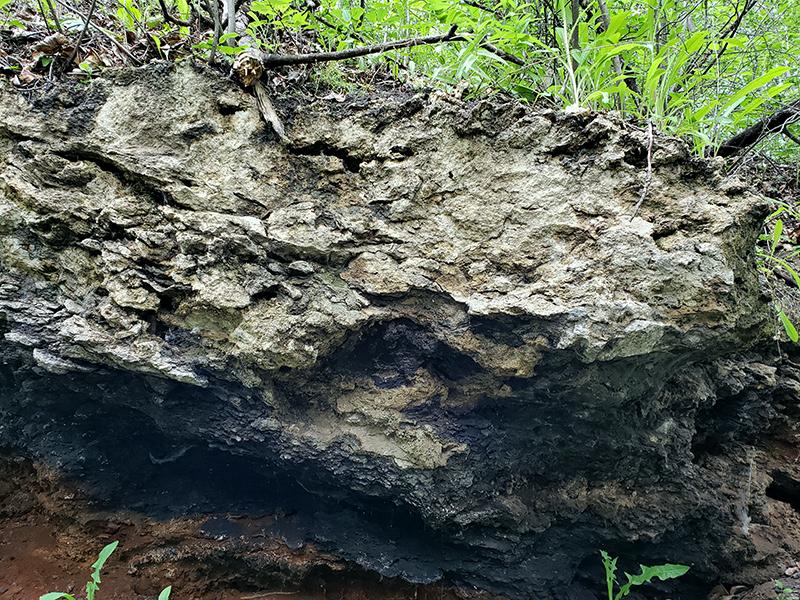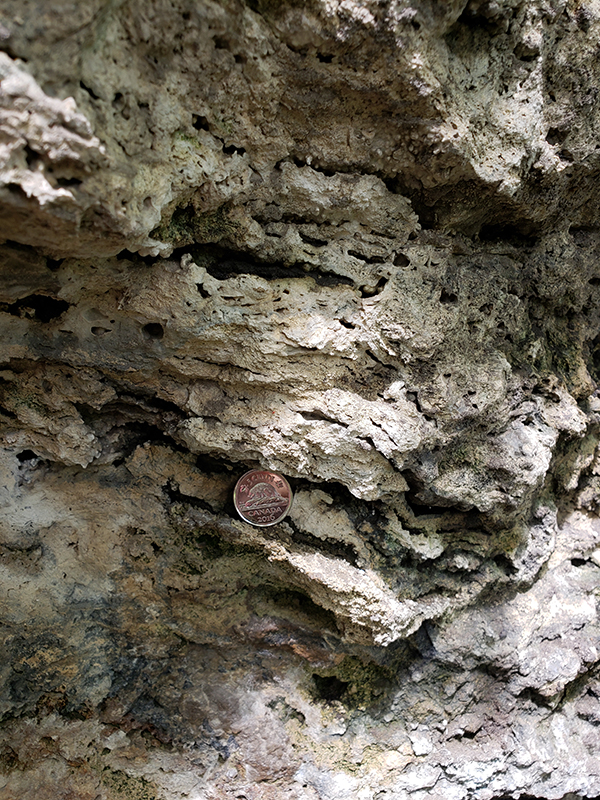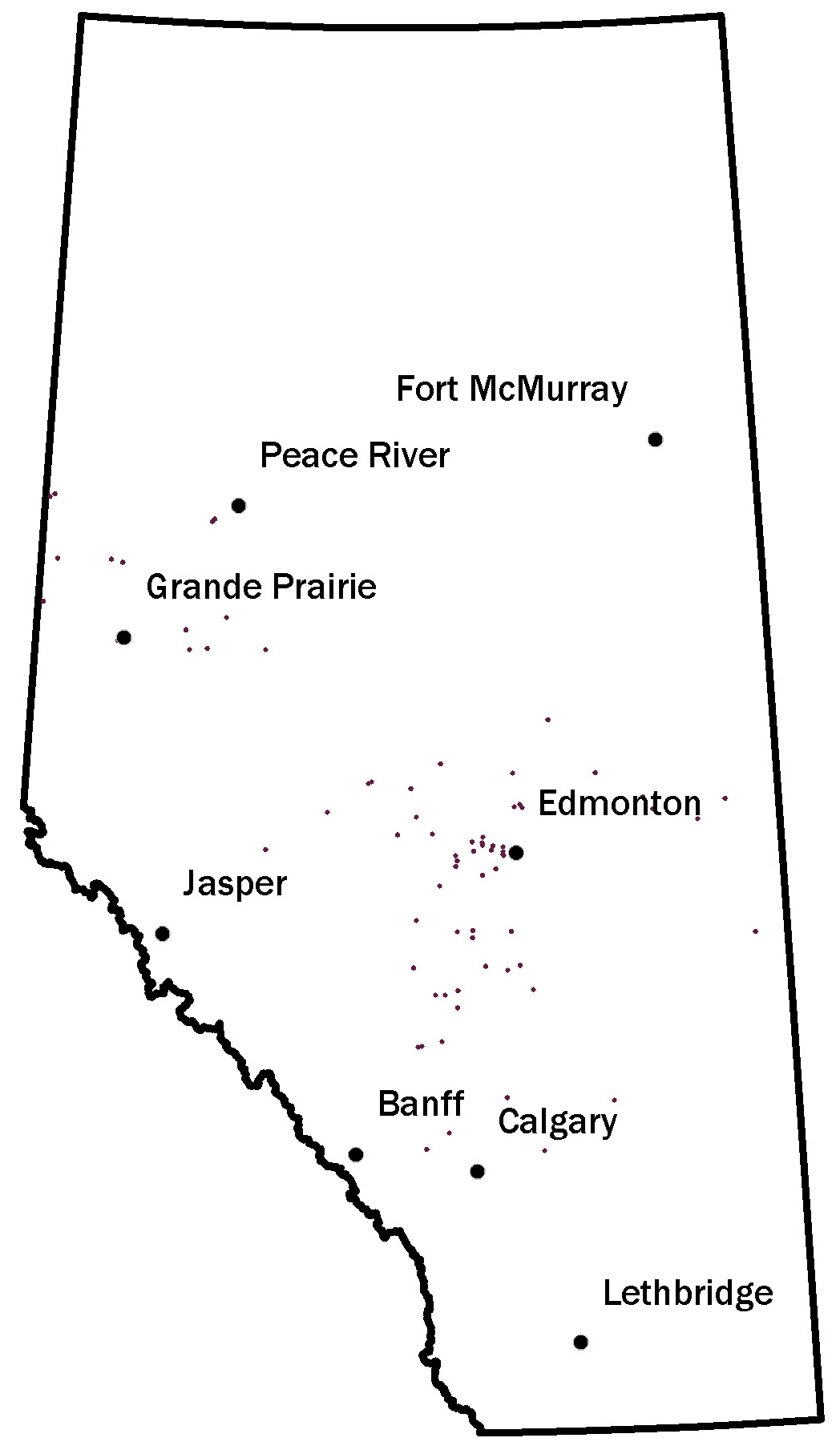![]()
A fist-sized specimen of marl from Marlboro, Alberta

Outcrop of tufa in Government House Park, Edmonton, Alberta

Close up of layered tufa with cavities at Government House Park.
Composition
Marl is a lime mudstone that contains up to 65% calcite (calcium carbonate) and a moderate amount of clay (35% to 65%). Tufa is a type of limestone made of microscopic layers of microcrystalline calcite. Whereas marl often contains microscopic fossils of algae, diatoms, and ostracods, tufa may contain algae and larger fossils including, leaves, wood, molluscs, and insect body parts, webs, and larval casings.
Age and Formation
Marl forms from the precipitation of microcrystalline calcite in spring-fed lakes and ponds. Any clay or microfossils that settle on the bottom of the water body may become entombed in mineral. Tufa forms in cold springs and areas of groundwater seepage. As the carbonate mineral precipitates, leaves and other life forms may become trapped within layers of mineral and fossilize. Algal photosynthesis produces calcium carbonate as a waste product and is thought to contribute to the formation of marl and tufa.
Important properties
Marl and tufa are fine-grained rocks containing calcium carbonate which has a basic chemistry. The rocks are soft and easy to crush into powder.
Uses
Marl and tufa are lower quality sources of calcium carbonate compared to limestone. That said, marl and tufa were produced in Alberta in the past to make cement and fillers. Calcium carbonate increases the pH of soils, is an additive in animal feeds, and is using in manufacturing industrial chemicals. Settlers plastered their walls, and fed their chickens, crushed marl and tufa. Marl and tufa are no longer produced in Alberta.
It’s a Fact!
Marlboro, Alberta was named for the deposits of marl that were excavated by the Edmonton Portland Cement Company from 1912 to 1932. A single smoke stack is all that remains.
Discover!
Historic images of the cement plant in Marlboro
Where to find marl & tufa
